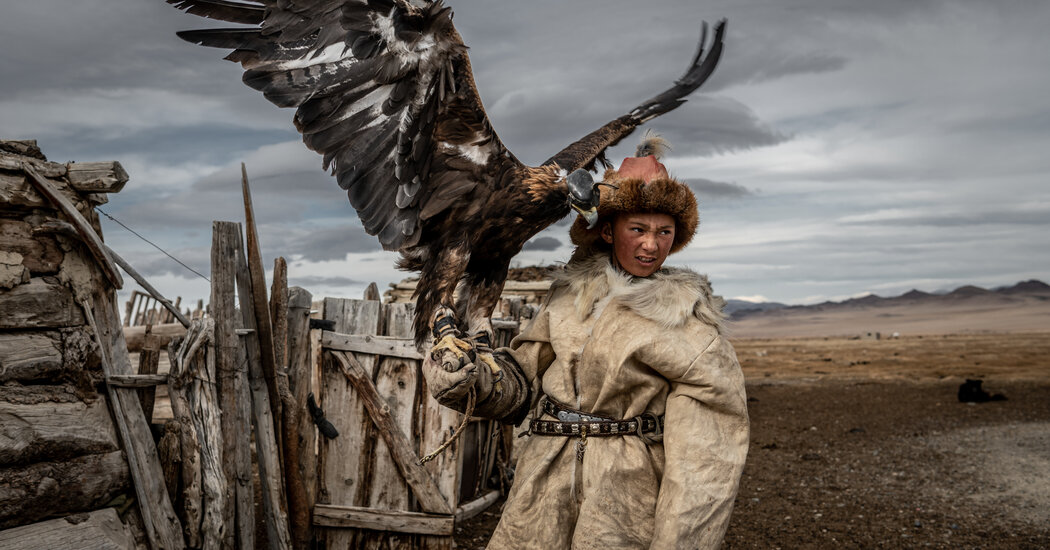Nine-calendar year-previous Dastan, the son of a Kazakh eagle hunter, rode his pony along with mine, cantering easily without a saddle and giggling at my attempts to clearly show my fluffy pony some affection — a gesture that the animal wasn’t accustomed to.
Surrounding us was the wide, desolate landscape of the Altai Mountains of western Mongolia. From the grassy valley wherever horses grazed along the river, the rocky, gold-tinted terrain stretched endlessly toward the jagged ridges in the length, with a dusting of snow heralding the arrival of wintertime.
On horseback with Dastan, I was reminded in some methods of my childhood in Wales, the place I spent my days driving my pony through the countryside, taking pleasure in the peaceful pure beauty of my surroundings, usually with a very hot cup of tea ready for me at the conclusion of a lengthy day.
In October 2019, immediately after just about 3 several years residing and operating in northern Iraq, where by I coated the country’s efforts to defeat the Islamic Point out, I began working on a personalized photography project that drew on my background and affinity with horses. My goal was to explore the relationships between animals — horses, in individual — and the individuals whose livelihoods rely on them.
To get started, I flew to western Mongolia to meet up with and photograph the legendary Kazakh hunters, horsemen and animal herders.
With the enable of a nearby information and translator, I traveled from the town of Olgii, the capital of Bayan-Olgii province, to pay a visit to some of the seminomadic herding family members who keep on to are living off the land in an very severe natural environment.
Encompassing the westernmost region of Mongolia, Bayan-Olgii is the country’s only Muslim and Kazakh-the greater part province, or aimag.
Deep in the Altai Mountains, where Russia, China, Kazakhstan and Mongolia satisfy, Kazakh folks have for centuries produced and nurtured a special bond with golden eagles, instruction the birds to hunt foxes and other modest animals.
Alankush, an eagle hunter, animal herder and father of two, mentioned that he seems soon after his eagle “as if she were a infant.”
The historical tailor made of searching with eagles on horseback is ordinarily passed down from father to son at a young age and is regarded as a great supply of pleasure.
“All Kazakhs adore to teach eagles,” explained Alankush. “Now we hold eagles mainly mainly because it’s a standard activity.”
Serik Gingsbek, who was 26 when I met him, is a effectively-recognised and achieved eagle hunter, sportsman and horse trainer. He talked at duration with me about his exclusive marriage with his eagle.
“If my eagle feels negative, I truly feel lousy,” he mentioned. “If she’s joyful, I’m content. When we go to the mountains, we share all the things with each other.”
In current generations, several Kazakh people have migrated from the countryside to city regions, partly since of the challenges in accessing health treatment, instruction, social providers and employment alternatives. Between all those who have stayed, the historical follow of eagle hunting has presented an supplemental resource of revenue from the people who pay out to see the famed birds in motion.
Instruction and caring for golden eagles is just a single part of an animal herder’s existence other folks include things like teaching youthful horses, tending sheep, milking yaks and butchering meat.
The each day requires of a conventional herding family’s daily life can go away small time for added education and learning or the pursuit of personal ambitions away from dwelling.
In reaction to their physically demanding existence, moms and dads who do the job as herders normally mail their kids to boarding university in towns and cities, occasionally significantly from household, in the hope that their youngsters will safe a more comfy long run.
In spite of possessing lived his entire life in the mountains, Alankush mentioned he hopes for a various path for his young children. “I never have an instruction, and I’m not youthful,” he told me. “If I were being young, it’s possible I’d go to Olgii to work — but for me it’s improved to stay in the countryside.”
“Countryside existence is extremely tough, in particular for young children,” he explained. “That’s why I ship my little ones to school. If they end college, I hope they’ll come across work in the city.”
Paradoxically, this sort of parental ambitions may outcome in the eventual disappearance of a lifestyle and way of everyday living that has survived for generations.
Outwardly, documenting the regular methods of everyday living in western Mongolia stands in stark distinction to my time expended photographing scenes of conflict and struggling in Iraq. But the two topics share a common topic: the human battle not just to endure, but to build a greater future for oneself and one’s spouse and children.
That common struggle can be discovered in circumstances of conflict, profession and forced emigration, just as it can be located in the situation of a nomadic folks subsisting on what many would think about meager sources.
And in spite of the distinctions in the surroundings and the scope of the challenges confronted by the men and women I achieved, I felt a link — and shared a common language — with the Kazakh horsemen, as a result of our mutual affinity with horses.
